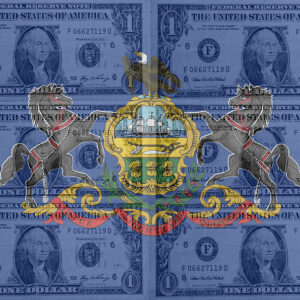Pennsylvania received good news, but also a warning, this week from Moody’s Ratings.
The bond credit rating company upgraded the Keystone State’s rating to Aa2 from Aa3 on its about $1.4 billion in General Obligation Bonds. Analysts praised Pennsylvania’s “significant increases” in its reserve funds and its ability to moderate long-term liabilities.
“[This] will provide important flexibility in the event of future budget stress,” wrote Moody’s analysts.
The state government received praise for accumulating a $7.4 billion general fund balance and a $6.8 billion Rainy Day Fund. The state’s large and diverse economy, along with its moderate long-term liabilities, influenced the rating upgrade decision, according to analysts.
It’s the second significant credit upgrade for Pennsylvania in the past year. Fitch raised the state’s bond rating from AA- to AA last November.
Politicians from both sides of the aisle hailed Moody’s new credit rating.
Democratic Gov. Josh Shapiro said it was proof the government knew how to thread the needle between necessary economic investments for the workforce and “responsible fiscal stewardship” for future generations. He thanked the legislature for coming together to “pass balanced budgets that invest in Pennsylvanians, grow our economy, and create real opportunity” for people.
For Senate Appropriations Committee Chair Scott Martin (R-Lancaster), the upgraded credit rating was a positive step toward “achieving responsible, structurally balanced budgets” for the future. “We have worked very hard to achieve these credit rating upgrades that save taxpayers huge amounts of money, and we owe it to taxpayers to continue to manage their money wisely,” he said.
Moody’s economic picture wasn’t entirely rosy for the Commonwealth.
Analysts said Pennsylvania faced ballooning budgets, specifically on education funding, and had relatively weak demographic and revenue trends. That could challenge economic performance, long-term job growth, and state revenue.
“Ineffective governance that hinders the commonwealth’s financial oversight or causes delays in implementing necessary budget adjustments mid-year,” noted Moody’s in listing what could lead to a future downgrade.
Moody’s also warned that other credit downgrades could occur if Pennsylvania spent its general fund reserves and failed to maintain its Rainy Day Fund.
Additionally, it revised the state’s outlook from positive to stable.
Pennsylvania’s Independent Fiscal Office (IFO) issued a similar warning in July.
The IFO said the state risked losing its $6.6 billion surplus next year. That’s because the state plans to spend $8 billion more than it takes in during Fiscal Years 2023 and 2026. While tax revenue exceeded expectations, the current fiscal year includes nearly $900 million in deficit spending.
The biggest disagreement between the Governor’s Office and the IFO involved tax revenue. The Shapiro administration’s revenue projection for this fiscal year was $320 million higher than the IFO’s.
So far, Pennsylvania’s tax revenue numbers for this fiscal year mostly align with IFO projections.
The General Fund sat at $10 billion at the beginning of the month, about $199 million more than the IFO expected. That’s because August tax collections were higher than either the administration or the IFO projected at $2.93 billion.
Tax collections last month were $38 million more than the IFO projected, but $34 million less than Shapiro expected.
Elizabeth Stelle from the Commonwealth Foundation said Moody’s was merely stating the obvious by urging state lawmakers to rein in spending.
“Lawmakers will once again need to control spending to prevent future downgrades to our state’s credit rating and make Pennsylvania a better place to raise a family, start a career, or launch a new business,” she told DVJournal.
Martin agreed the state needed to be careful with future spending. He said it was important to keep the Rainy Day Fund well-stocked with cash and avoid “the temptation to overspend and create bigger deficits in the future.”
Please follow DVJournal on social media: X@DVJournal or Facebook.com/DelawareValleyJournal

